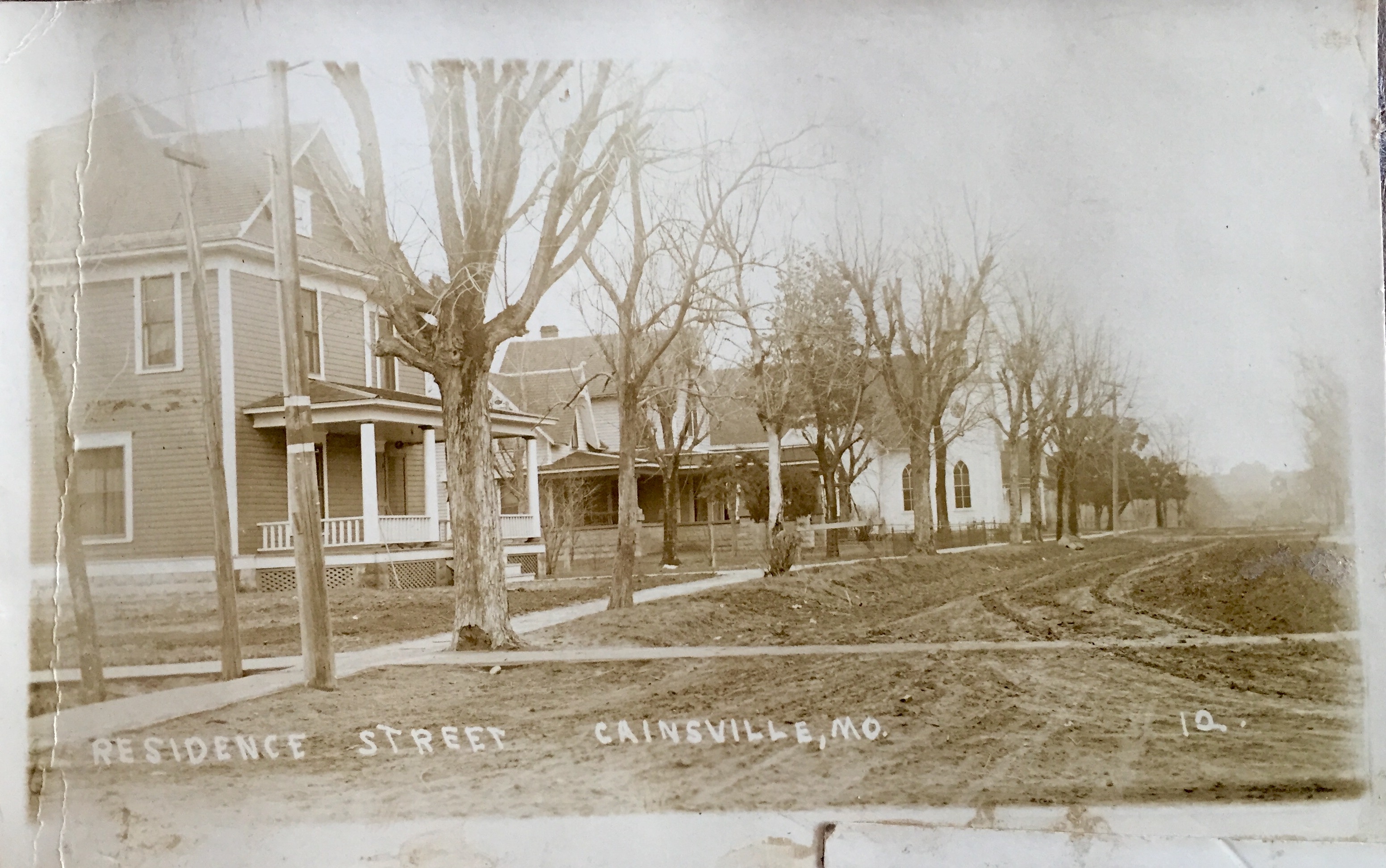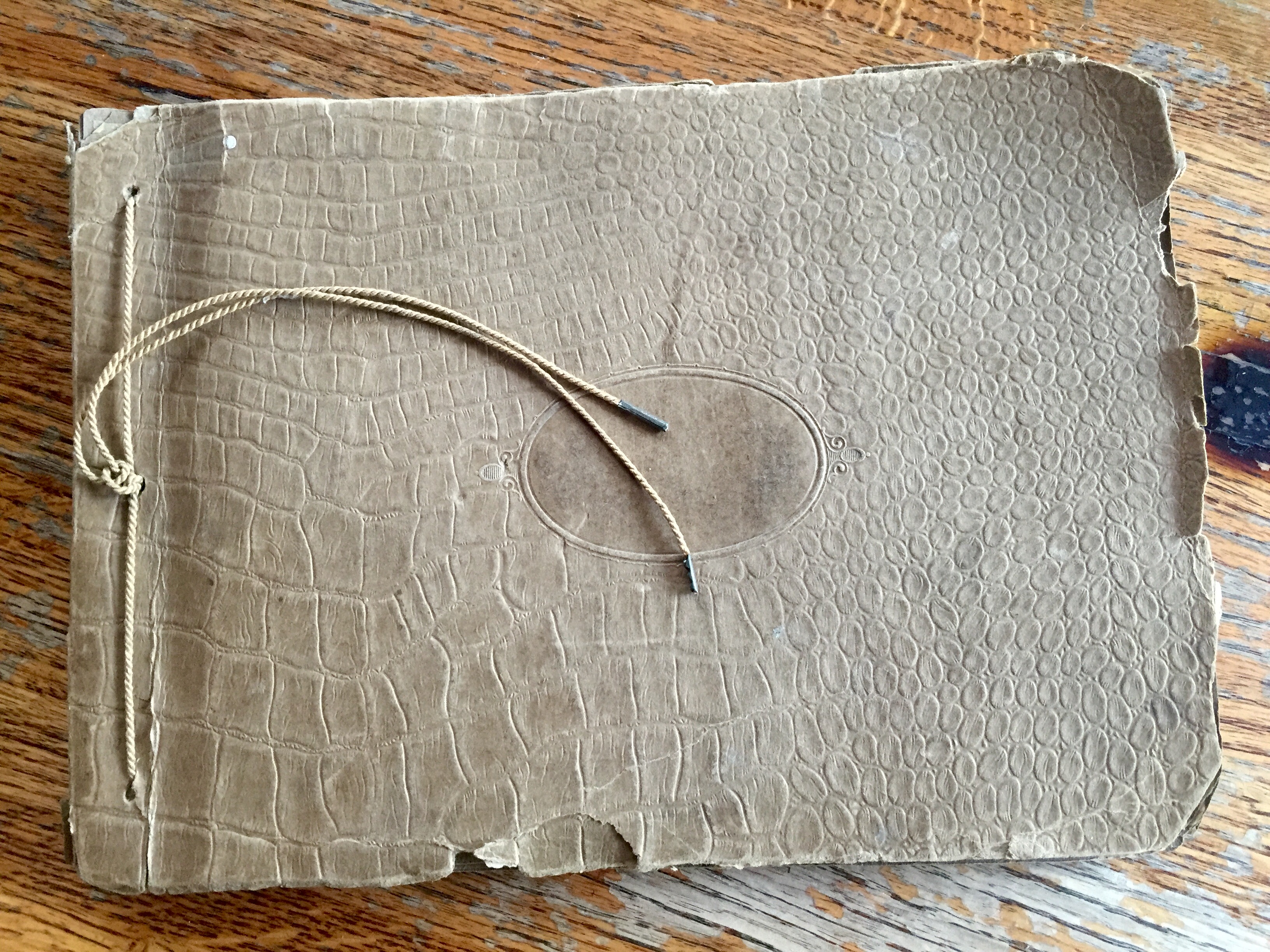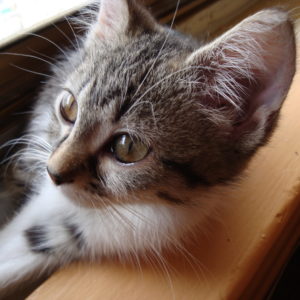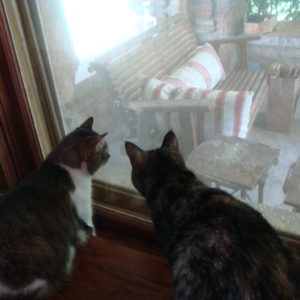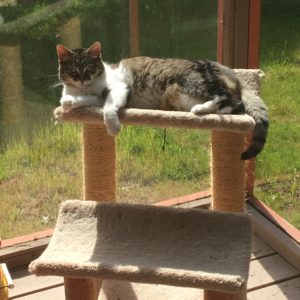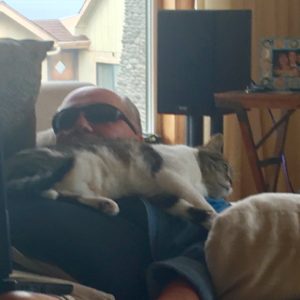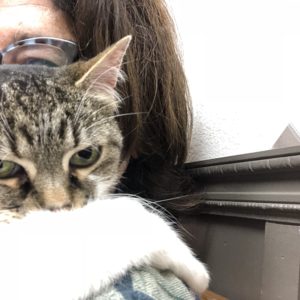Other Histories
In his novel of recollection and memory, The Sense of an Ending, Julian Barnes finishes the first half of his story with this:
”He survived to tell the tale” –that’s what people say, don’t they? History isn’t the lies of the victors, as I once glibly answered Old Joe Hunt; I know that now. It’s more the memories of the survivors, most of whom are neither victorious nor defeated.
Welcome to Other Histories.
August 15, Lincoln Nebraska, around 35th& Holdrege, Lincoln, Nebraska.
The Fall semester is underway. Can you believe it? It’s only mid-August. Cry as I may over the passing summer, time marches on and the students fill the halls of my building here on East Campus at UNL. Classes start Monday.
Truth be told, I would rather be on city campus. I like its hustle and bustle and proximity to downtown. But East Campus is where I work, and it has its charm. Its original layout, buildings sitting on the East
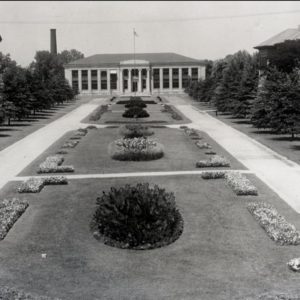
Campus Loop, still exists today with buildings dating back to the first half of the 1900s. East campus is home to the Dairy Store – a must-visit spot for

out of towners, it features ice cream and cheeses made from products generated by the UNL Ag Program. The East Campus Student Union houses a tiny but full-service bowling alley that is the practice field for our five-time National Championship bowling team. On East campus you are as likely to see a freshman Agricultural Systems Technology major wearing a hubcap sized belt buckle and high school letter jacket for rodeo as you are to see a brightly dressed Textiles and Merchandising major wearing fashion forward clothing standing out like a prairie flower.
Yes. East campus is home to cow pokes and future fashionistas alike (and all industries in between that aim to clothe and feed the world). It is also home to UNL dental college and its annual Museum of Dental Oddities, The Larsen Tractor Museum, and a prairie themed botanical garden and arboretum. In addition, and I’m not saying you do, but if you want to view a three fourths size bronze statue of former Nebraska Governor and U.S. Agricultural Secretary Mike Johann’s, East Campus is the only place I know of to do that.
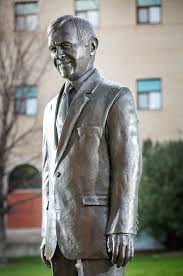
Sitting on the west side of the Loop, UNL’s original home Ec. building houses not just Nutrition and Textile Arts and Sciences, but administration and meeting rooms for the entire College of Education and Human Sciences. This is where I found myself this morning for a welcome meeting to the 2018-19 school year.
On my way there, I met up with this little fox who was no more afraid of the light pedestrian and bike traffic than are the campus squirrels. Fox sightings are becoming more common in town, but that hasn’t made seeing one any less thrilling. This one might as well have been tossing fairy dust as it trotted across the East Campus Loop. People were spellbound.
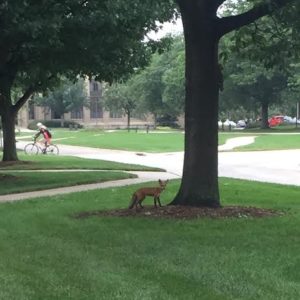
After the meeting, I took the opportunity to visit upstairs in the Home Ec building. On the second-floor hallway there is usually an interesting display. This month, the clothing of Mari Sandoz is the theme. Mari Sandoz was the child of immigrants and the oldest of 6 children. Like all children of settlers, she worked on her family’s farm in Western Nebraska throughout her young life. She did not learn to speak English until the age of 10. She was 17 when she finished the 8thgrade but did not go to high school. Yet, amazingly, she later went on to attend the University of Nebraska and became one of Nebraska’s most important authors. She, of course, famously wrote Old Jules, about her difficult and harsh father. She also wrote one of my favorite books, Miss Morrisa, Doctor of the Gold Trail. It’s historical fiction about a female doctor, Miss Morrisa, practicing in the rough and tumble western frontier. Because she was a woman, she was deemed fit only to treat Indians and white dying people if they were too far away to reach male physician who lived in the city. It’s a great western, plus good history of western Nebraska and its pioneer/Indian history. I highly recommend this book.
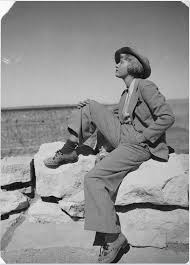
As an adult, Sandoz often wore pants when she went back to the prairie, however she had a sense of her public image as she gained notoriety writing and dressed for the part. Dresses from her professional wardrobe have been curated and are on display right now. She favored tailored stylish dresses always with a bit of brown, as a reminder of her connection to the land on which she was raised.
Another little-known East Campus gem is the Robert Hillestad Textile Gallery. It is an intimate gallery space tucked away in the corn
er of the second floor of the Home Ec building. There is always something interesting and unexpected going on in there. This month on exhibit are painted cloths from India. They are intricately detailed and vividly colored,
and sometimes sparkling. The themes celebrate the sacred cow or the lives of the deities.
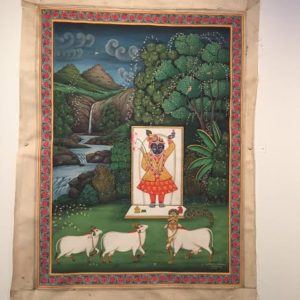
I’ve included a photo of detail from one of my favorites. It features a god head wearing a peacock crown on a cow body. The tail is that of a horse, but it is colored like a peacock plume. The feet are tiny peacock bodies. It’s wonderful.

So, scramblers, while I’m woefully unready for the semester to start, and I continue to have City campus envy (#FOMOUNLCITYCAMPUS), East Campus, where I am planted, blooms. Today I stopped to smell the flowers.
Peace.
J
How to get a Free Cup of Coffee in Lincoln City, Oregon
First you need to go way back. Say like 10 years.
-
-
- And then head to Wayside Waifs, a no-kill shelter in Kansas City, which is a real and kind place. It is so real in fact, the ragged edges that led to its creation may cut and bruise when you visit.
- On the day you wander into that series of buildings there is a little nagging thought in the back of your mind. It’s not well-developed yet but at the heart of it is a simple shape; it’s this: two kittens playing.
- You and Andy enter a room within a bigger room which is littered with mewling crawling kittens. And even through their brains are thimble-sized most are self-aware enough to know what they are doing. One dark orange kitten named Gary sits above them all on a shaggy carpeted shelf. He orders the underlings about like a small lion. He alone does not want to be noticed by you, he simply wants to boss this passel. There is no eye contact.
- You say to Gary as you move to the other side of the room, sliding along the edges to avoid crushing kittens with your extra-large feet, “You know Gary what they say about the futility of herding kittens?” Still, no eye contact.
- Gary’s miniature mouth opens and you are captured by the art of it, the orange and just-right pink and the evenly placed ivory points. Like many felines, Gary doesn’t appreciate a joke, even one that is likely fresh to him.
- You were told Gary’s name by the volunteer who let you into the room. You pointed at that guy who was all puffed up and bossing the underlings from his crusty perch. She laughs, “His name is Gary and he is not available. Everyone who works here wants him.”
- Already Andy is surrounded by bouncing fur balls. There is a particular kitten who is mottled of coat, a coat which is so akimbo and at-attention it could be used to scrub the mud off boots, well this one is the one for Andy, although he does not know it yet. He picks up the mottled kitten who is displaying an exuberant fondness for his shoes and places her back into the teeming puddle so others can have a shot at maybe getting a home outside the shelter. But mottled one shows a single-minded determination to getting back onto Andy’s shoes and into his sightline. There is even a part of her she releases and orders to slip into the back regions of his mind and hunker there.
- The room reminds you of a scribble picture of moving random joy. Then there is one. A smaller one with an odd blue collar around her neck. The blue collar, which is the smallest diameter ever, contrasts well against the white and grey of her. She catches you looking at her, throws a side-eye and quickly looks ahead. She moves with purpose, her and her blue collar and short little striped legs. She picks her way around the diameter of the kitten mosh pit, she circles once and then circles again. Each time she passes you at the closest point she throws a side-eye. Just to let you know, she knows.
- Later you will tell people how Tenzing was smart enough to get noticed. She wasn’t the cutest, biggest, smallest. She was the most clever and you were simply caught by the trap she set. People will grow hazy-eyed when you tell this story. More than one person will interrupt saying, ‘You know she wasn’t really planning that out, right?” Their words formed of pure exasperation.
- Before you know it you are outside the kitten room pointing at two with the volunteer. Winner, winner the one with a scrub brush for a coat and the one with the blue collar, which you later realize is painters’ tape.
- That day at Wayside is a ‘two for one sale’. You will remind the cats -more than once- they were part of a larger fire sale. They return a sour-mouthed stare.
- You are also told the scrub brush kitten (later named Hopper) was dropped off at the shelter. Flat out abandoned. Her hind legs aren’t quite right, and you wonder if someone was worried about medical complications. But even now, a decade later, she jumps and runs with a random and powerful spark.
- The other one is named for Tenzing Norgay. She was found in a sack with other kittens on the side of a country road in Kansas just a few weeks earlier. Kansas; you can say it with a sneer or a sigh.
- Taken from the shelter, Tenzing and Hopper now live inside full time but they do have a cat tv where squirrels are lured onto a ledge next to a window. The cats grumble at the squirrels and this never grows old, unlike jokes about cats and fire sales.
- When they are 6 years old they travel by plane to Portland Oregon. They live the first summer there at the Oregon coast. It is the warmest summer on record and sunlight pours into the windows like an unfurled ethereal welcome carpet.
- By now their personalities are hardened. Hopper is brash and loud. She is a big female and an American tomboy trope. A friend begins to call her “Boy” when Hopper is still young, maybe 3. This handle remains an excellent fit many years later.
- There are two catios at the beach house. Tenzing and Hopper take the morning sun in the back of the house and finish their day in the front catio, which is surrounded by 3 sides of windows. Big white and black birds sail by, temporarily blocking their sun. They grumble in Oregon too. Sometimes they watch the sun set over the ocean. Other times they choose to sleep through it.
- The years go on.
- Then week of July 22 in 2018, you all head to the coast (except Andy who works in the Midwest sometime) to avoid the Portland heat wave. Then Tenzing gets sick for no obvious reason. Her first round of vomiting contains food and you find gooey brown puddles of it hidden downstairs. Then gradually throughout the day the vomit turns into just foam, and she no longer can hide her sickness. You find splotches of the white foam throughout the house with your bare feet.
- Tenzing became a brave cat over her 10 years. When someone visits she lingers to see what the change will bring. If people settle in to a chat, she sits near and waits to be engaged.
- Tenzing has honed a unique performance artist skill based on a documentary she sat through about Marina Abramovic. But instead of silently and intensely staring at visitors (which T perfected years earlier) T hugs visitors. Sometimes she hugs and presses her heart on the heart of the other. Other times she mummers a stillness spell.
- Sometimes Tenzing’s hugs are mink coats -luxurious and long that can end in little naps (hers).
- T may be a healer. After a stroke you take frequent naps and T appears from the nowhere and curls up next to your scrambled brain. Her purrs lower you into a structured sleep and you share dreams. They are mostly about hiding, hunting, and pouncing. In those dreams T is your teacher. There is a rigor to the dreams that straighten your brain.
- By the end of foamy vomit day, T’s stocky legs are splayed when she walks. And she falls into walls if she takes too many steps.
- By age 6 Tenzing takes to slow dancing and to Neil Young. The dancing is not unlike her hugging performance. Razor Love and Harvest Moon are her favorite songs. Or maybe they are yours. Sometimes her heart is not into the dance, but she gives in to you while staring out at birds on the wires outside.
- Most of that horrid foam vomit night you spend holding Tenzing close. She is holding on to you for what feels like for her own dear life.
- You leave her downstairs in a comfy bed with a saucer of water and hope she lives through the night.
- The coast house is in Lincoln City, which is really like saying ‘the country’. There are no 24 hour vets
- The next morning you wake up early, 5am, and find T has crawled up the stairs on her shaky legs to sleep in the bed with you. You hug away the hours until an early vet office opens.
- The vet in Lincoln City could only order xrays and blood work. The data indicate significant problems with her kidneys. This is shocking, you are in shock, and lean back into the chair with the news.
- Now listen, the vet says loudly while looking straight at you: Now you are going to go save your cat, drive to Portland and get into surgery right away.
- On the way out of town you stop at a drive-through coffee shop and realize then you are crying.
- So you drive 80 miles through the mountains and back into Portland where it is close to 100 degrees for the 7th day in a row and Portlanders are cranky and leaving town in tidal waves. The roads are clogged, the sides of the roads dotted with vehicles that have been in accidents. It is an Armageddon scene complete with an unnaturally hot blazing sun and palpable citizen anger. And your cat is dying in the backseat.
- T mewls her discomfort only occasionally. She remains brave.
- You tell her stories about how you met. The one where she was wearing a blue collar of painters’ tape. The one where Hopper bit her eye. The one about her trip across the country to the house with catios and big windows.
- You fill the car with whispered “I love you; don’t die” orders. You fill it up you fill it up.
- When you are in the emergency pet clinic in Portland you wait 4 hours as they work to get T’s vitals up. An hour later you are offered 3 options. Two of them end in death. The first way is quick (euthanasia) and 2nd option is a slow torturous treatment that mostly ends in death. The 3rd option is surgery, but surgery is in Corvallis, about 75 miles south of Portland. And you need to leave now. You are informed T needs around the clock care.
- You and Tenzing get back into the car and enter rush hour traffic to the south. The interstate is still clogged with citizens leaving the city. Almost all vehicles that aren’t commercial trucks carry too much gear—cars are loaded with trailers and bikes stacked on top of kayaks. Side windows are blocked with camping gear.
- T urinates in her carrier throughout this leg of the journey. You continue to tell T stories about her life. You soften the hard edges of the car with “I love you, don’t die” chants.
- At the clinic in Corvallis you meet 1 of the 2 doctors who will do surgery on T the next morning. There is an assistant with him, taking notes during the debriefing. The assistant is a big man, youngish. As you tell the story of T’s day and the windshield hours, the assistant begins to cry. You are both crying now. It is the sweetest thing, this big big man in a lab coat, nodding his head along to T’s story and wiping away fat tears. At one point he pulls a urine-soaked T out of the carrier and she hugs him as he paces.
- You tell him, “She is the best cat”. He nods and sniffles, “I can see that, yes yes”.
- There is no need for you now. You have handed her over to others who have a plan to heal her. You drive back to Lincoln City on a country road.
- It is the most beautiful of drives. The sky is clear and the sun has fallen behind the mountains and on its way down it tossed orange and pink high into the sky for a final folly. It reminds you of Gary the kitten and a young T. The fields are golden and reflect the late light. Wildflowers line the road. There is something in bloom with a wispy head and is back lit in this light. There is something of the divine inherent in the scene. The land here has always extended its comforting arms, offering a soothing moment and a gentle reminder of its constancy.
- You now take the first sip of the coffee you got in Lincoln City 9 hours ago. And it’s only then you recall the words of the young man who works the window:
- “Here, just take this coffee today, it looks like you’re having a bad day. I hope it gets better.”
-
The Art of Fieldtripping – a few notes from C and a couple pointers from Andy
you shall above all things be glad and young…
I’ve been wanting to add the words, and go fieldtripping, to that opening line of e.e. cumming’s poem for some time now.
If you’re willing, take a moment to recall your school field trips and consider how they made you feel. I imagine the words ‘glad’ and ‘young’ might be two words your memory offers up.
As a grade schooler I attended a small parish school in Gresham, Oregon. We were taught by Dominican nuns and not much screwing around was allowed. For instance, we were required to wear frumpy wool jumpers except for ‘free dress day’, which was permitted twice during the school year. The first free dress day was allowed for school pictures and the second day was granted for the annual field trip.
You’d assume the nuns would have wanted us in our forest green plaid when out en masse fieldtripping. But they correctly anticipated our roughhousing and overall poor behavior, and probably figured all that and uniforms too would reflect poorly on the school. We were children of Gresham after all, not the Catholic school children of Madeline’s Paris, who did such an admirable job of traveling about their grand city in “two straight lines …”.
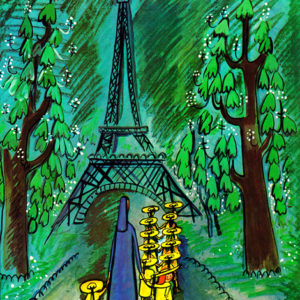
There were no straight lines for us; we celebrated our freedom like a gang of drunken sailors, like a club of meth-rattled Harley riders -shouting and shoving, taking off from the group in full gallop like a rando bottle rocket headed nowhere in particular except apart, falling and then pulling ourselves up with a mouthful of childish expletives. If you didn’t come back from a field trip with gum in your hair and at least one skinned-up knee you were not embracing Field Trip day in a manner worthy of a St. Anne’s student from Gresham, Oregon.
We took the train to Seattle for our annual field trip. It was always an extraordinary experience enhanced with the pure joy of being out of school. Seattle was the city in the region and the trip was our chance to peek at their esteemed culture (mostly museums and once the Olympia Beer brewery -go figure) just long enough to get a hint of the elegance that Seattle symbolized to Portlanders back then. We usually took an additional stop along the way to visit an Indian Reservation. We exited the train and were herded into a cedar plank house with open roof and burning fire in the middle of a long rectangular space. Heavy wet grey-white light filtered through random cracks in the building. It was always chilly, usually raining. Silence settled in. The fire punctuated the quiet with random snaps but that was the only sound for minutes upon minutes.
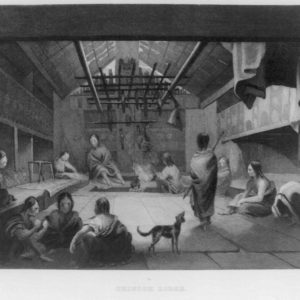
After we quieted naturally, a tribal elder in full regalia would enter to chants and drum beats performed by other tribe members. The musicians stepped out of the wet foggy air and moved closer to the fire, their images sharpening in the better light spread by the open roof above the blaze. When the music stopped the elder would commence with stories of thunderbirds, whales, and salmon. We sat mesmerized by tales of animated animals that wandered, fought, and lorded over the earth before us. The elder had us focus on the fire and look for the animal spirits drawn back to hear their own stories. It was the best storytelling ever. Nothing will ever top it.
We still fieldtrip, Andy and me. And I encourage you take up the art of fieldtripping as well. This is different than a hike or a bike ride. It’s a journey layered with multiple events. It’s best to have a few things planned, in case one thing doesn’t work out. Plus, multiple options are essential so that movement is unavoidable. Note: driving to Town B down the road and then plopping onto a bar stool does not count as a fieldtrip. That’s just a day drive with a bar as the turnaround point (not that there is anything wrong with that, it’s just not a fieldtrip). However, a day drive with multiple bar stops does qualify as a fieldtrip.
Motion is key. Hazy goals are advised (‘maybe see this’, ‘think about walking there’). And because we are adults there is no need to set ‘home by’ hours. Weather cannot deter. That’s why it is important to pack rain gear and layers of technical clothing and Andy’s essential tip -always bring appropriate footwear.
Fieldtrips can be small things like checking out a back road you’ve passed for many years. Or a fieldtrip can be bigger, like walking through a spring meadow at high elevation and then gambling the night away in a new casino bound by odd local rules and visited by the mis-shapen denizens of rural Washington. Fieldtrips can take a cue from cats -approach the day by planning to learn all escape routes and hiding places within a specific area. Fieldtrips can be inspired by Harriet the Spy -take notes and pictures time and again along a well-worn route.
Build a music playlist to enhance the drive time.
Aim to learn the names of trees, berries, flowers, rocks, mushrooms in the area. Take samples of treasures of which you are unable to name and follow through on the identification. Begin to accumulate the appropriate reference books.
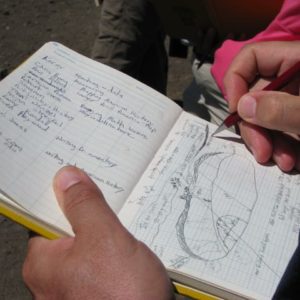
Day Camping counts as fieldtripping. Pack a cooler with hastily constructed baloney sandwiches and dad beer. Take books and swim suits and towels and floating devices. Figure out if music will be essential while outside. Get up early and stay late. Swim, float, explore trails, look for birds, feed chipmunks, follow both well-worn and obscured trails, get a titch high. Talk to the oddballs you may bump into. Avoid scrapes and head bumps. But carry a first aid kit just in case. If you fall asleep under a tree, take the gum out of your mouth least you return home with a wad of it in your hair.
Call a new friend or a family member for a fieldtrip. Don’t be shy. Tell them about your art of fieldtripping.

Some fieldtrips will of course be better executed and rewarded than others but keep at it. It comes back, that sense of wonder and gladness for the most basic things outside of your own yard.
Try for one field trip a month.
This is how e.e. cummings ends that poem I shared at the start of the entry, which is also a fitting wrap-up to a day of fieldtripping well spent,
I’d rather learn from one bird how to sing than teach ten thousand stars how not to dance.
=====================================================
J writes about Life’s pathways and the stuff we carry along the way:
We just moved to a new house from the first house we ever bought 21 years ago. New House is only a mile from Old House, not far, but still…we made a move. I don’t make changes all that often. I don’t embrace change.
Specialists on cognitive development through the lifespan will tell you that new learning is good for the brain as we age. Changing your routine changes your brain. Doing new things, learning new processes, requires cognitive effort, and this sort of problem solving – more than doing a crossword puzzle or word search – helps generate new neural pathways. I was thinking this on my run the first morning we woke up in our new house. We’d been moving all weekend and I was in need of some exercise beyond bending and lifting. So, after some coffee, and before more bending and lifting, I hit the trail for a short run. Since New House is in the same neighborhood as Old House, I ran my same trail, but with a different entrance point and a slightly different route. It occurred to me that I am changing the neuropathways of my brain in the same way my running pathways are changing.
 A new, slightly different, map for my morning run = a new map for my brain.
A new, slightly different, map for my morning run = a new map for my brain.
As that satisfying thought floated away, my mind wandered over to the topic of Stuff. The amount of stuff we have accumulated over the years is unbelievable to me. Why is it sometimes so difficult to part with the physical past?
My mother-in-law, Florence, was a saver. She obviously felt a responsibility to take on items, keep them, and pass them down, trusting others would do the same. Why else would she have kept these shoes belonging to no one in the immediate family? (evidently made for a witch baby.)
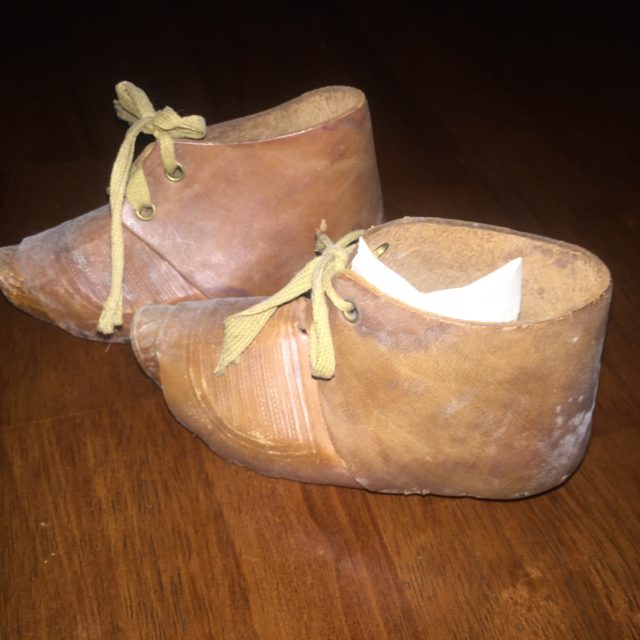
Or an ashtray of her uncle’s? (she never smoked a day in her life.) After she passed away, I found odd knickknacks throughout our house that I’d never seen before. Matt would smuggle them in after a day of sorting with his sisters—nestling tchotchkes in places around the house as if I would not notice. Florence attached notes to many of the items, …”this was so and so’s, please keep it in your care.” The notes were her ace in the hole. Hard for a son to ignore for sure. So we packed up and moved shells, and ceramic elves, and baby shoes, and vacation souvenir coasters with which we had no direct relationship.
I can’t put all the blame of our superabundant amount of stuff on Florence though. A few years ago, a lady I had never met drove through town and made a stop at our house to drop off belongings of my Uncle Bernie. The items had nothing to do with me: some expensive rustic looking silverware with wooden handles; a sterling silver tea server; and a wooden chair. Bernie was a beloved uncle, though, a sporadic part of my life growing up. He and my dad—brothers—went through alternating periods of estrangement and closeness for reasons which I will never be able to guess. When Bernie died, I hadn’t seen or talked to him since I was a child. His significant other, I think, had a hard time with his death and made a trek cross country on I-80 as a part of her healing. Having inherited all his things, she took advantage of the fact that a few of his relatives, (me, being one of them,) lived along the path of her intended journey. She contacted me, told me it was important to her to give these things a home, dropped off the stuff, stayed long enough for a glass of water and a chat, and went on her way – free as a bird. The items went in to my basement closet. And now I have moved them to my new house. What to do with them?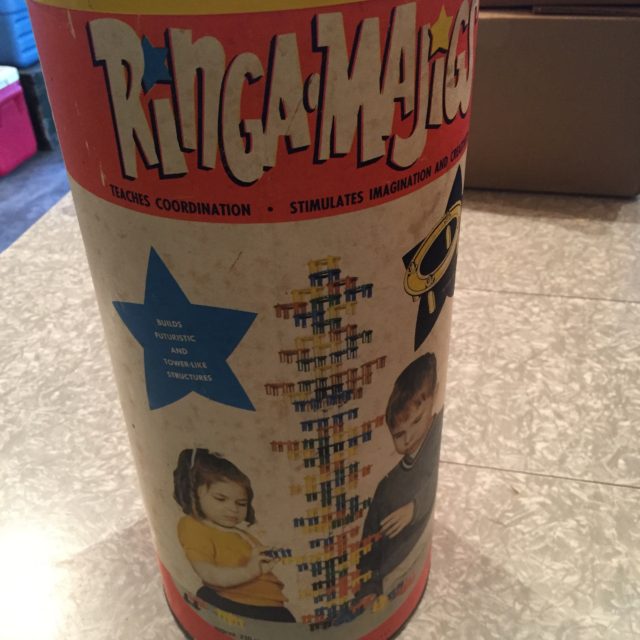
I might sound like it, but I’m not judging. I am as guilty as anyone else for all of our stuff. I have saved toys from my childhood I haven’t even looked at since our last move (remember, 21 years ago.) Ring-a-ma-Jigs I got with green-stamps my grandma gave me. These are plastic building pieces that were never a popular fad. Why do I still have them? Why is the memory of this uncool toy not enough?
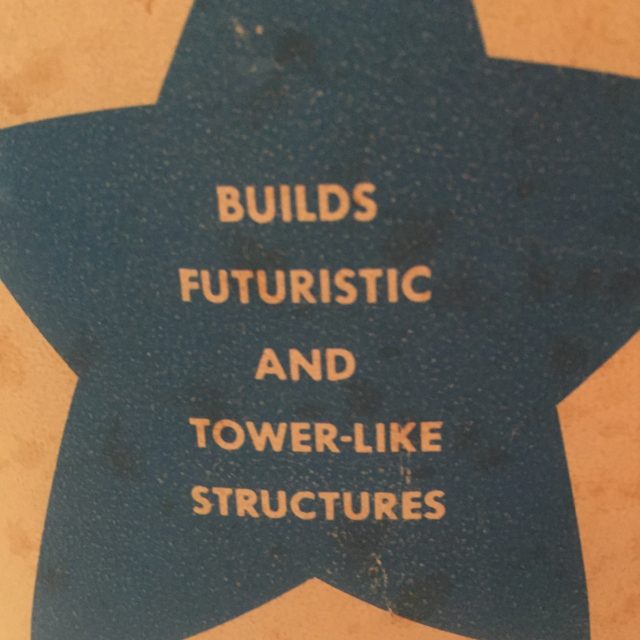
A stuffed Kermit The Frog and a Cookie Monster puppet that can swallow cardboard cookies. (He can also barf them if you’re a talented enough puppeteer.) A Dressy Bessy and a Snoopy with a complete wardrobe. Am I afraid that someone else won’t love these toys as much as I did? Do I have some deep-lying suspicion that they have souls and am afraid to determine their future?

I have records I don’t (can’t) play. Clothing I never plan to wear again. I have items passed on to me from family members that have been sitting in a dark closet. While I have fond memories of them from my childhood, I have nothing else really to do with them.
A friend who is a professional organizer once told me she thinks people keep things as a testimony to their personality. “See? I earned 13 girl scout badges and went to Camp Pine and Dunes three summers in a row. Look at my Prince pins—I was cool. Check out my worn-out ‘Property of KKG’ sweatshirt.”
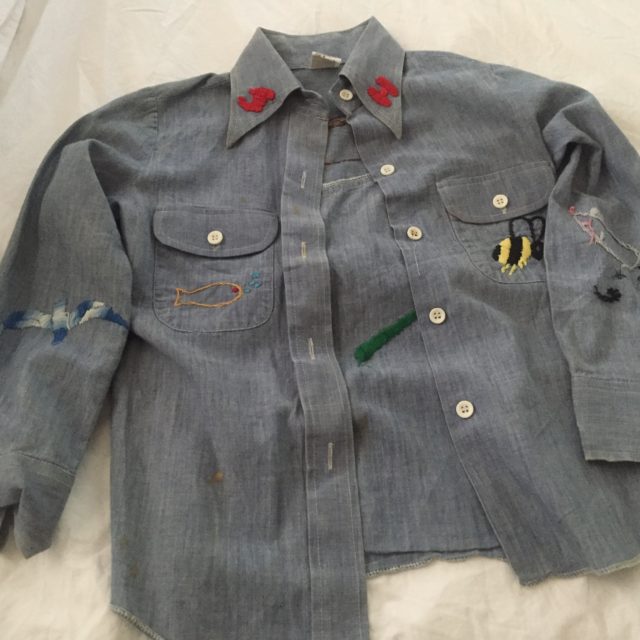
I think there’s some truth to this theory. If you see me at different stages of my life, you’ll understand me now because I am now the sum of all these different mes: I am youngest sister of three girls, clarinet player, pet-lover, reader; I am also new kid at school, awkward tween, last place swimmer, fast food server, casual runner, weekend chef, speech therapist, road-tripper, non-traditional student…and so on.
These mementos I’ve collected and carried through life so far. And as I circle back to the topic of pathways, I am reminded that even a straw weighs heavy on a long journey. So I have vowed to shed some stuff to make my trek lighter. I’m starting with the “simply no longer functional or needed” and working my way up to the “sentimentally valued, but alas, also not needed.” I am making baby steps. So far, the Ring-a-ma-Jigs are with me no longer, but Kermit still claims some closet space.
I am trying to live by the words of the sage, Jack Handey:
“When I saw the old bum pushing his grocery cart down the street, at first I felt sorry for him. But then when I saw what was in his cart I thought, well, no wonder you’re a bum, look at all the dumb things you bought.”

==========================
Animal Rescue
My friend shared a secret about how she rights herself when the humans in her life irritate or disappoint; it’s this: she takes a walk in a near-by park. She explained:
I love to walk up to the shores of the streams and ponds to frogs squeaking and tossing themselves from the shore out into the water. I love the ones that don’t jump, that lay as still as they can with just their eyes peeking above the swamp. The bullfrogs were in full chorus the other night with their croaking. They sounded like cows. We also caught a great glimpse of the bison. We watched great blue heron fishing. Saw some nice gold finches among the tall grasses. The day was overcast and just edging the thermometer to 80.
I’m charmed by the notion of the animals busying themselves with setting an outside stage that includes a soundtrack of squeaks and croaks and bellows which comes together in a splendid and soothing alfresco chorale. In my mind’s eye my friend crosses a threshold into the animal world, shakes off the people-residue and basks in the simple pleasure provided by the bullfrogs and bison and all other creatures great and small. It is as if they conspire to create the just-right surrounding for her.
Maybe they do. Perhaps they conspire.
I loved the animal story my friend shared. I replied with something like this:
I get your frogs. I like the birds. They take my mind off the monumental heap of work that does not inspire or invigorate me.
I can identify one particular neighborhood crow that I call Boss. Every morning Boss flies to the tallest limbs of the neighborhood Doug Firs and begins to preach from his high pulpit.
I like to think Boss and I have a relationship. I do know each morning I look forward to catching the glint of his obsidian feathers fliting purposely from tree to tree. He postures just enough that I notice him. His cranky and overly-loud voice gives me sufficient pause so I can now nod in recognition. If asked, I would tell you that Boss sends a daily corvid benedition just for me as I climb into the car for a long commute to the office.
======================================
Geoff Goodwin initiated Other Histories with this.
When Hillary Clinton clinched the 2016 Democratic presidential nomination after the June 7 primaries, history was made. Hillary became the first woman to win the nomination of a major party. Even so, I didn’t feel the emotion of the moment like I had eight years earlier with Barack Obama’s nomination. I’ve always had mixed feelings about Hillary, so that was undoubtedly part of it. And since Hilary’s nomination was a foregone conclusion, some of the majesty of the moment was missing. 
But Hillary’s nomination did turn my thoughts to my mother, Elaine, and I thought about what the moment would have meant to her. For Elaine, and for the other women of her generation who would have dared to imagine a woman as President, the announcement certainly would have been filled with the thrill of vindication. Perhaps even relief.
First, let me clarify, in the sense of having given birth to me, Elaine wasn’t really my mom. Yet in every other meaning of the word she was; Elaine was my mother for thirty-three years.
My “real” mom, Phyllis, birth mom, if you prefer that term, died when I was two. My father never spoke much about Phyllis and didn’t tell me she had died until I was 27 years old. Why do adults always think children are ignorant of the ways of the world? Of course I knew she was dead, I had known so since I was a very young kid.
And as a kid, not knowing how Phyllis died, I imagined the worst. I assumed she had died in child birth, but in fact her death was much more bizarre – she had a seizure while drawing a bath and drowned.
When I was six years old my dad married Elaine. I’d like to believe that love was part of the equation, and I think it was, but as with all marriages other factors were involved.
Some background, Elaine’s marriage to my dad was her second. In the 1930’s Elaine married a man she met while attending the University of Nebraska. His name was Howard and he too was a student at the University. Howard played baseball and basketball at school, he was what they called back then a Big Man on Campus.
A few years later, World War Two came along and Howard left the University to join the army. He became an army officer, a colonel if I remember correctly. After the war Howard stayed with the army a while longer to work at the Pentagon. When he eventually left the army Howard became an executive at General Electric and father to a daughter he and Elaine named Nancy. And for a brief while Howard and Elaine were living the American Dream.
But the dream didn’t last. In the early 1950’s Nancy was diagnosed with cancer and died a few months later; she was eight years old. Of course I wasn’t around then, but I know that something went out of Elaine, something she never got back, something that can only be caused by the death of a child.
And things got worse. A few years later, Howard died unexpectedly. And just like that, within the span of a few years, Elaine was alone.
Elaine had to take a job as a secretary (even though she had a college degree) at a medical clinic in Lincoln, Nebraska. She was working there when she met my dad, who was in the Air Force. I can imagine Elaine’s loneliness and despair at the time. She was likely very frightened of an uncertain future. Perhaps my dad sensed that in Elaine too. After she died we discovered Elaine had lied to my dad about her age when they first met, telling him she was 42, when in fact she was 52. It seems silly now, but it shows how trapped she felt by her situation.
I can’t say whether my dad and Elaine had a happy marriage, whatever that means. Certainly their marriage had its ups and downs. They both had health problems toward the end of their marriage and in a curious way that seemed to bring them closer together. They came to depend on each other as they never had before. Elaine died in 1995. My dad died in 2oo7.
Sometimes I think of how my life could have been different if I’d grown up with Phyllis as my mom. As I said, I don’t know much about Phyllis except she dropped out of high school to help support her family after her father died. I guess it’s unfair to speculate, since I know so little about her.
As for Elaine, besides giving me love, the greatest gift she gave me was a love of reading. I don’t know what my life would be without books -but that is a different story.
Elaine was a survivor, someone who suffered unimaginable loss and still kept going. I smile as I write this and imagine her drinking a cocktail somewhere, toasting Hillary, with Louis Armstrong playing ‘What a Wonderful World’ in the background.
